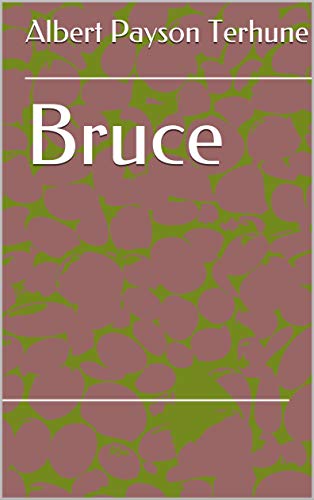CHAPTER II BRUCE
byChapter II introduces a story of rejection, persistence, and transformation through the lens of an unlikely hero. Bruce begins as an oversized, lumbering collie puppy, born into comfort but quickly cast into the role of a family embarrassment. In a world where perfection is often expected from birth, Bruce’s clumsiness and odd proportions draw criticism, not praise. He is awkward in play, oblivious to danger, and unteachable in manners, despite his deep yearning to belong. The family debates his worth openly, especially the Master, who doubts Bruce will ever grow into his name. Yet amid the growing frustration, the Mistress of The Place remains steadfast in her quiet belief that something special lies dormant within the pup. Her faith, though challenged, does not waver—not even when Bruce fails repeatedly or falls into the water-lily pond once again.
This loyalty is tested harshly when Bruce is dismissed at a dog show not just for poor form, but for failing to resemble his own breed. Humiliated, the Master’s decision to sell Bruce seems final—his mind made up, his disappointment absolute. A “For Sale” tag seals Bruce’s fate, and he is purchased by Dr. Halding, a man whose cold gaze hides a darker intention. Halding, a vivisectionist, views Bruce not as a pet but as a subject, a body for dissection in the name of science. When the Mistress learns of this, her protective instincts ignite into action. A confrontation ensues, not just of ideals but of ownership, empathy, and cruelty. Her attempt to reclaim Bruce leads to a chaotic escape that results in injuries for both Bruce and Halding, but it also reaffirms what she’s known all along: Bruce matters.
During Bruce’s recovery, change takes root not just physically, but mentally and emotionally. No longer a clumsy pup, he gains control over his massive frame, strength in his limbs, and a new light in his eyes. The time spent healing seems to awaken the potential that had once been dismissed as absent. The Mistress, who had once stood alone in her support of Bruce, is now joined by others who begin to notice the transformation. Slowly, Bruce grows into the very image of what a collie should be—noble, graceful, intelligent. By the time he reenters the show circuit, he is no longer a joke but a contender. And when he claims first prize at Hampton, the cheers echo not just for the dog he is now, but for the journey that got him there.
Bruce’s story offers more than sentimental triumph; it serves as a reminder that first impressions are often shallow. Like the historical figures mentioned in the chapter’s opening, Bruce had been underestimated and overlooked. His victory isn’t one of sudden greatness—it’s one built on time, care, and the willingness of one person to see past flaws. Mistakes, awkwardness, and failure did not define him. Instead, they became stepping stones toward growth. Readers are reminded that potential doesn’t always shout—it sometimes stumbles and falls before it walks with pride. The lesson here is universal: transformation is possible when doubt is replaced by belief.
From a psychological perspective, this chapter reflects what child development specialists observe in young learners who initially lag behind. Just as some children may struggle with coordination, comprehension, or social cues, many go on to thrive when guided with patience and love. Expectations often weigh heavily on growth, especially when success is measured too soon or too narrowly. The Mistress’s patient advocacy mirrors the role of an effective mentor—one who fosters growth by seeing possibility where others see problems. Her bond with Bruce nurtures not just obedience, but confidence. In many ways, Bruce mirrors the path of a late bloomer whose brilliance simply needed time.
The chapter does not romanticize Bruce’s journey—it shows the grit, the pain, and the near loss that shaped his ascent. The dramatic rescue from the vivisectionist adds urgency and illustrates the real risks tied to neglecting those who don’t initially fit the mold. It also raises subtle commentary on compassion, particularly how society views animals and the consequences of seeing them as expendable. Bruce’s turnaround is earned, not handed to him, and that gives his transformation weight. His redemption arc isn’t just for him—it’s for anyone who’s ever been labeled “a failure” too soon. That final moment at the Hampton show is not just about a ribbon; it’s about everything it took to get there.

